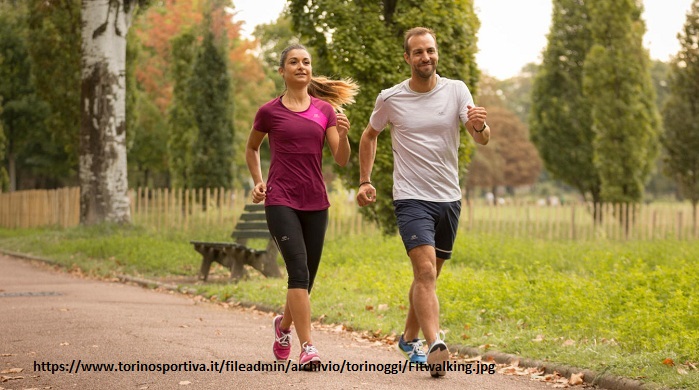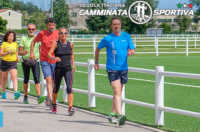SPEED WALKING
Speed walking: what is it
The names by which this discipline may be misleading: in fact, speed walking is not by definition a competitive discipline, even if it is nowadays adopted also for walking races; its equivalent in the official competitive environment of athletics is Race walking. To know more, have a look here.
“Speed walking” however clearly indicates the basic nature of this discipline, in which the whole gesture is aimed at to increase walking speed. Speed is not an end in itself: in fact, normal walking is for sure a beneficial activity, but it can be rather neutral, from the point of view of physical engagement. On the contrary, speed walking allows to increase the physical effort, to reach an adequate level to train the muscular and cardio-vascular systems and possibly improve their function. Hence come the two names of “power” and “fit” walking.
I will really write only few words about how to do Speed walking, since almost everything is already documented, adding however something personal. I approached speed walking was almost by chance, and curiosity, and my initial feeling was not particularly addictive. But, as it often happens, the involvement must be mental, first of all. It is necessary to enter into the techniques, methabolise them and apply them sufficiently well, so that they do not become a source of frustration and can be tuned to individual needs. It is necessary to discriminate the minimum technical standards, useful to practice this discipline with ease, from all the stereotypes, that do exists also for Fit walking: commonplaces, fashion or simply more popular trends. Well, it maybe that we will not become champions, but we can take for each discipline what is useful for us.
This is more or less what happened to me with Speed walking.
Speed walking: what it does
What I wrote about Nordic walking substantially holds also for Speed walking: you may have a look. I repeat however some points, with something more specific.
You will read that also Speed walking is beneficial for many things. Indeed, in has all the potential benefits and drawbacks of all the physical activities, with some distinctive traits:
– it will be beneficial, if you are able to practice it correctly, and attain a progressive fitness level, proportionate to the intensity you wish to reach; otherwise, as almost all sports, it may cause you some inconveniences;
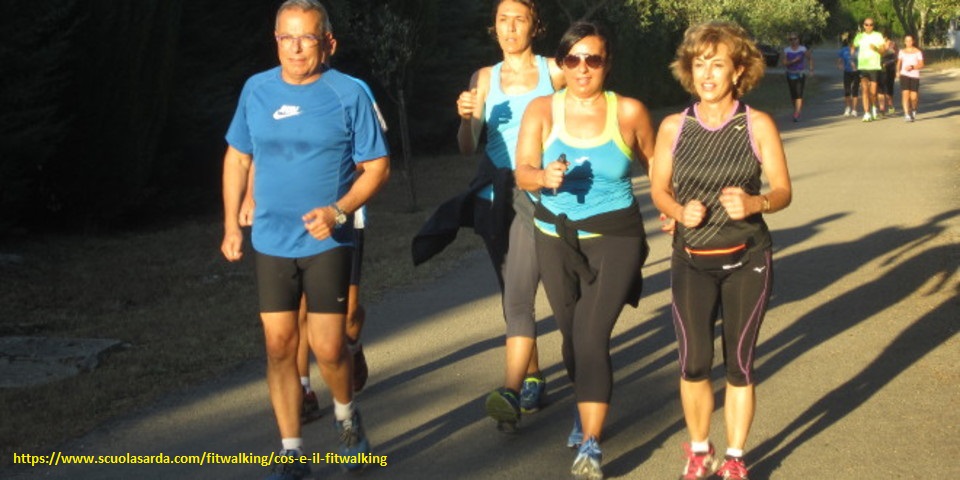
Speed walking can be practiced by everyone who is in good health, for pleasure or to start training programs
– it is far less traumatic than most sports, Nordic walking included;
– with Speed walking, you will vigorously swing your arms; even if you do not directly use your arms to push you forward, as it happens with Nordic walking, this arm swinging uses also the muscles of the upper part of your body. But, first of all, the good coordination of arms, legs, and hip, requires that you maintain a correct posture and a proper tension of your abdomen and trunk muscles;
– Speed walking is anyway a fast walking, that you will do somewhat forcing the normal walking paces; if you do not perceive doing some effort, perhaps you are doing something else; and you are definitely not doing any workout;
– as for all the physical activities, preventively go through a medical check-up, especially if you come from a mainly sedentary way of life.
Now, some more personal tips:
– you can practice in almost any place, with appropriate conditions (see the “How to do” chapter);
– Speed walking improves your coordination capacity and, when done well, it makes you more friendly with your body;
– Speed walking became for me an excellent complement also for some apparently not very related activities, such as hiking, for its coordinative improvement and possibilities of pace variation according to needs.
Speed walking: how to do
Attending a basic training course is almost a must to start and acquire the technique. Then, also depending on the course structure, the number of training session, and your own characteristics, you may also continue by your own.
Here below, find some essential things.
– you will not need any specific equipment, apart adequate shoes, that you will choose once you start the practice, and focus on your priorities. Good walking shoes, with flexible and shock-absorbing sole, will be adequate to begin;
– since Speed walking is a fast pace activity, it will soon become almost essential to have a device to measure your speed; a simple heart rate monitor is OK, also supplying additional data to monitor your training;
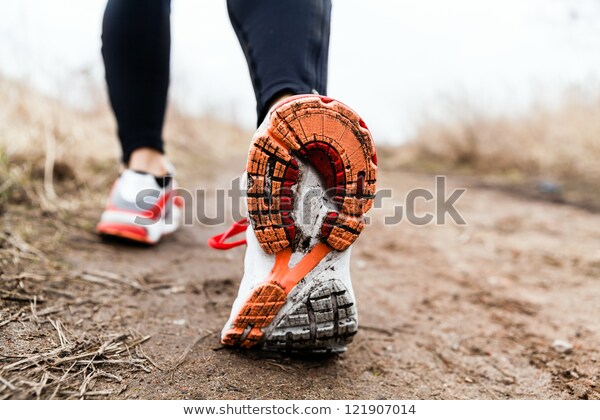
Foot rolling is a fundamental gesture
– foot rolling is fundamental; perhaps even more than in Nordic walking, it your feet will vigourously push you forward;
– you will accompany each step with a hip torsion, helping the step extension;
– the arms will swing at the same pace, and alternatively, to legs; the elbow will be bent at 90° degrees, and the arms will vigorously swing around the shoulder joint; practicing Speed walking you will realise how this movement is complementary to that of legs and hips, substantially helping the progression. It will sometimes happen that, when you distract a bit and slow down the pace, the recovery will start just from your arms;
– with a good practice you will attain the optimal equilibrium between step length and frequency; especially at the beginning, or if you only occasionally practice, long steps and high frequency will not easily go together; in these conditions, higher speed is generally more easily reached by augmenting step frequency, rather that length, unless until you have improved muscular strength;
– globally, Speed walking gesture is very dynamic, and will be more successful if your general attitude is relaxed, without artificial tensions.
Speed walking: where to do
Think about the word “speed walking”, and it will immediately suggest that flat terrain is its favourite context. Steep slopes and rough ground do not match with the gesture of this discipline, that is vigorous, but requires some precise conditions.
So, urban parks and smooth country roads are the ideal places to practice. Even more than Nordic walking, Speed walking can be practiced almost everywhere you find these conditions, also on rather hard ground, such as asphalt, where the use of poles may become annoying, in the long term.
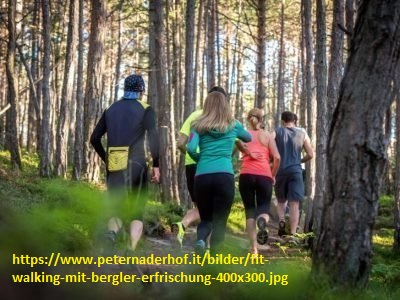
On smooth ground, speed walking can also be practiced in natural contexts
Somebody also practice Speed walking indoor, on treadmill. I am not fond of gyms, and never did. The advantage is that, apart from being independent on weather conditions, you can also regulate the effort by simulating an uphill slope.
And finally, lets present something coming from my personal experience.
Doing Speed walking on a gentle slope is extremely profitable:
– it trains the muscles that you use for an appropriate foot rolling; better, walking uphill helps to acquire the awareness of this gesture;
– it makes you feel Speed walking as a technique suitable to be adopted each time you feel it as appropriate, even during different activities, such as hiking. As an example, when during relatively short hikes and without any overload on your shoulders, you want to maintain a sustained pace along smooth stretches. Or, it may be useful to make faster and more enjoyable stretches on road that sometimes you encounter.
To synthesise, I am not an hardliner of any specific sport, and perceived Speed walking as an useful tool, in combination with other motion activities in nature, to help us to calibrate strength and efforts, according to what is best suitable for specific contexts and moments.
PROGRAMS
Nordic and Speed walking package La Spezia
Nordic and Speed walking package La Spezia - can be booked by groups, operators, organisations A "package"
Speed walking entry level course La Spezia
Enty level Speed walking course in La Spezia - can be booked by groups, operators, organisations Speed walking
Nordic and Speed walking entry level courses package
"Package" of Nordic walking and Speed walking entry level courses - for private groups - for touristic and wellness operators
Speed walking entry level course
Speed walking entry level course - for private groups - for touristic and wellness operators This is the

